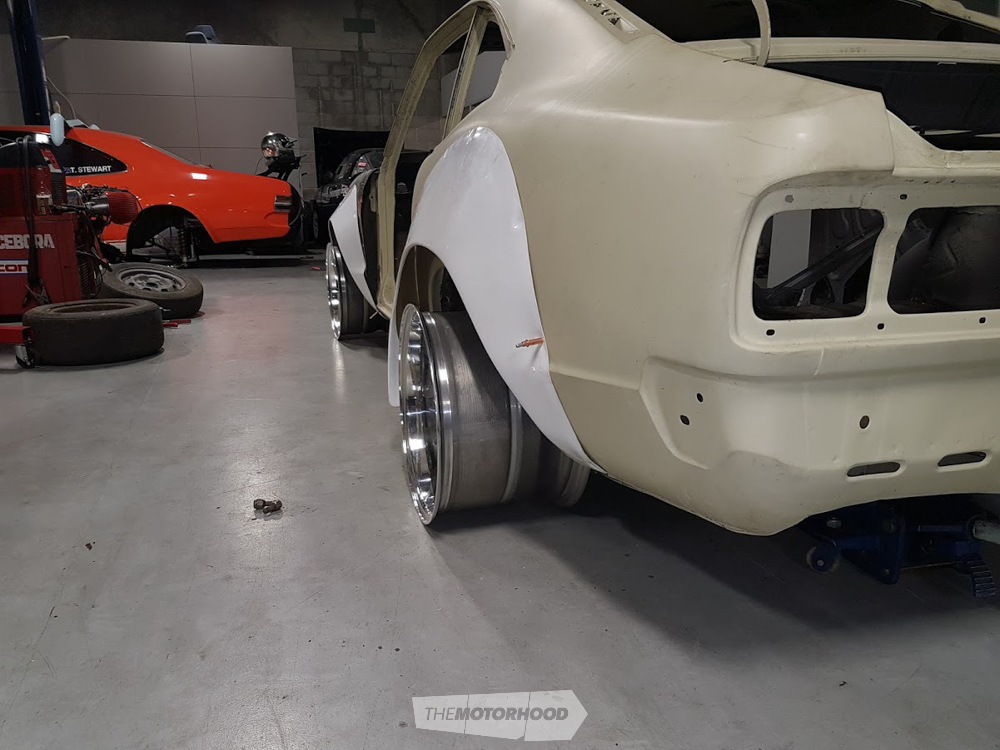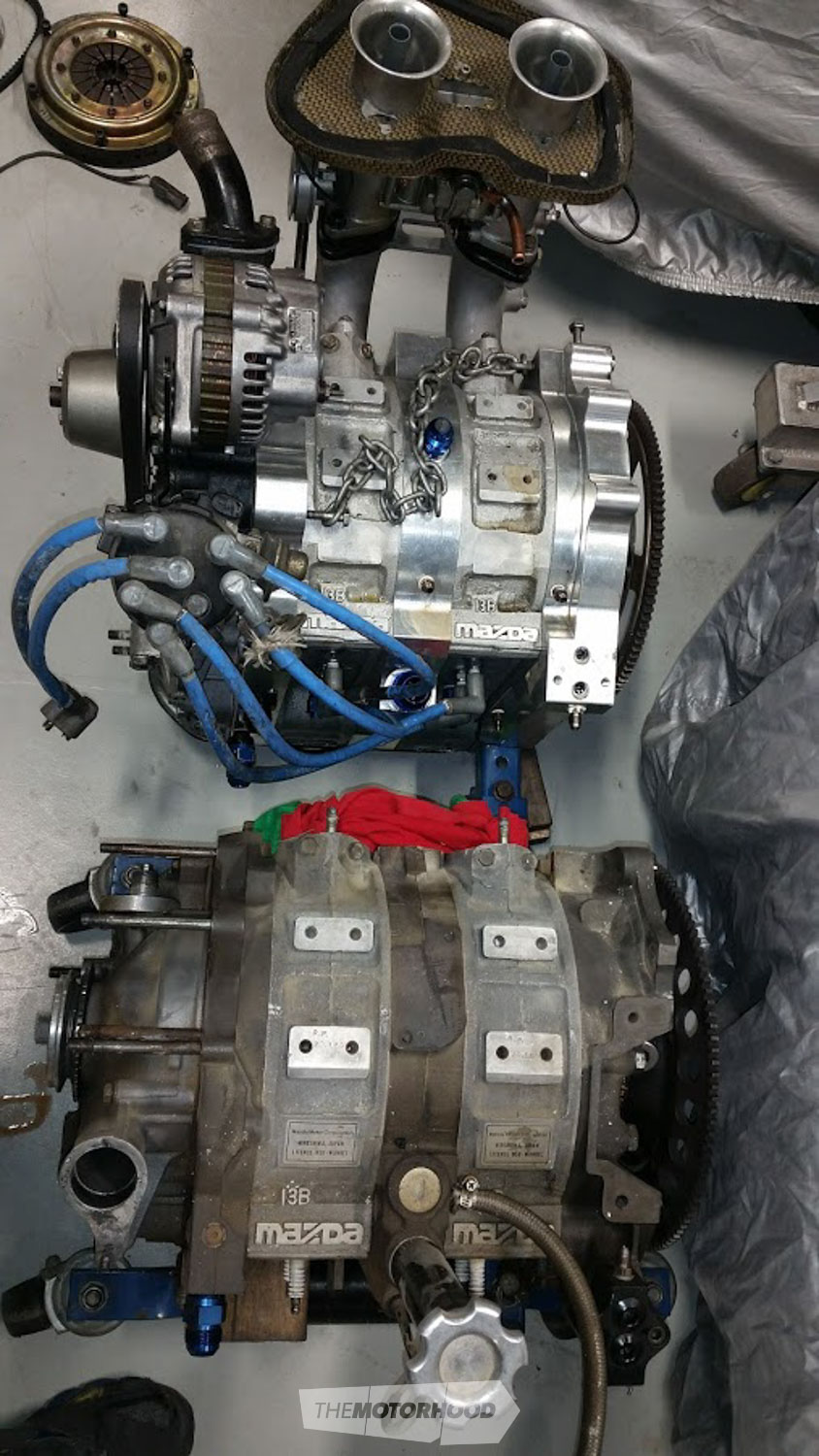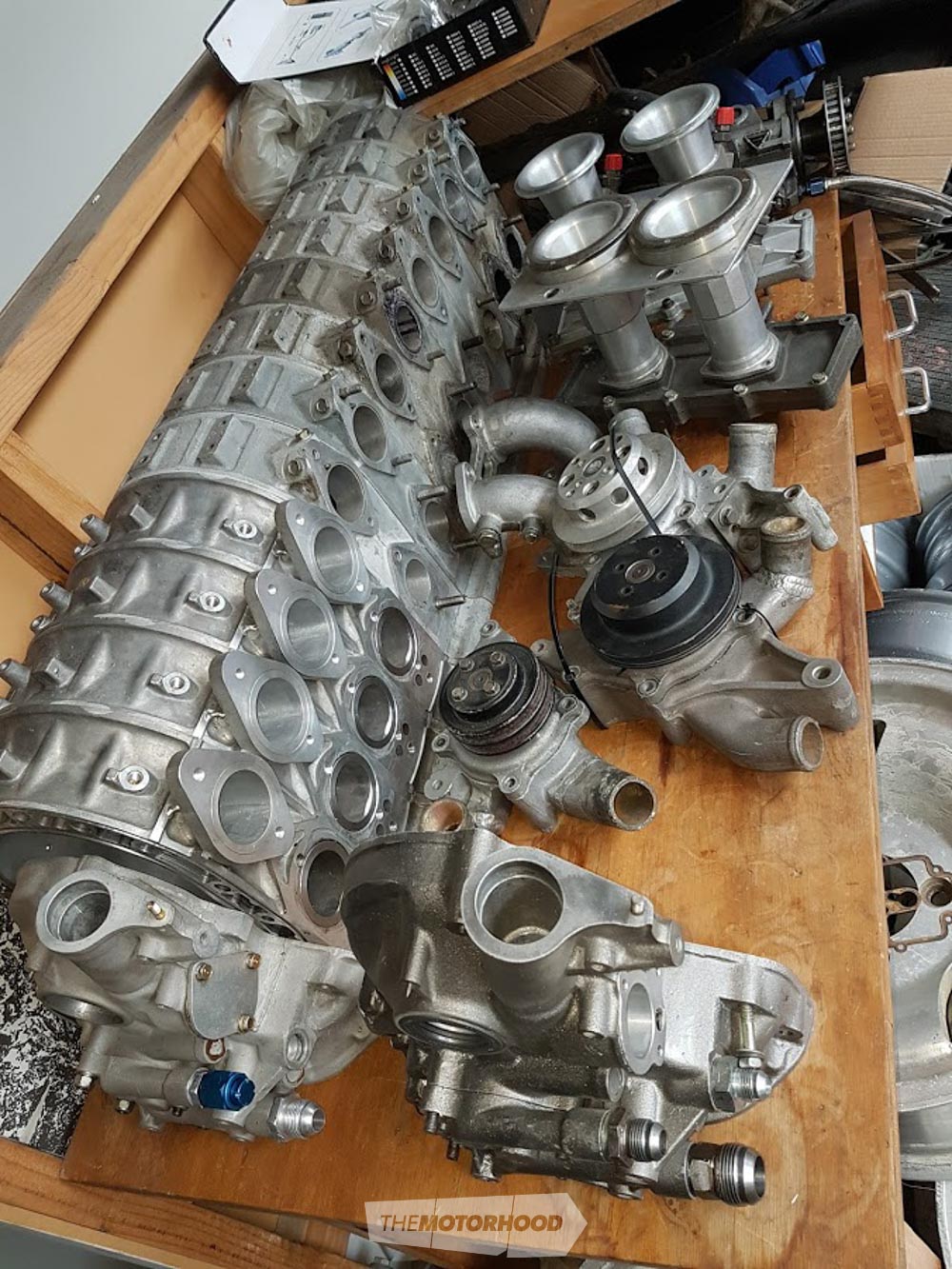We don’t just feature completed cars, sometimes the coolest stuff can be found in the under construction section. Meet the Mazda Factory Race 13b Katayama RX-3

There are some absolutely insane pieces of racing history tucked away in Kiwi workshops and garages, but getting your hands on a genuine Katayama RX-3 is damn near impossible here — or abroad, for that matter. So Wade Henshaw decided that he would simply build his own, based on the Japanese Touring Car Championship (JTCC) ’76 winner — undertaking an almost 20-year labour of love to collect the parts required.
That would firstly see a Mazda Factory Race (MFR) 13B peripheral-port (PP) with flat side mechanical injection packed into the bay and after running a similar set-up in his RX-7 S1, which pumps out 276kW, Wade has developed his own billet alloy plates — just to ensure his desire to push 291kW out of the PP can be achieved. With a curb weight of just 700kg, that would make for an epic power-to-weight ratio. That power would chew through apex seals; hell, even motors with half the power often manage that. So, the metal seals have been binned, on the advice of Wade’s US-based friend Carlos Lopez — who won a Daytona race in a rotary-powered Mazda — and ceramic replacements fitted. Those in the know will know how crème de la crème that is, apart from anything else!
Sticking with the Katayama dream, Wade has not only sourced the same type of sand-cast MFR dogleg first 1:1 four-speed found inside the genuine article but has also got a five-speed variant that would later be found in the car after the win — and Wade plans to use it — which would then send drive down to yet another MFR piece, the floating diff, fitted with a Watt’s linkage and coilovers for stabilization.
What would a Katayama RX-3 be without the iconic look of huge bubble flare?! These are reproductions, as they simply cannot be bought, and were made to fit exactly as they would have appeared on the starting grid of Fuji Speedway. To keep weight down, the nose cone, bumper, and guards are fibreglass, as they were on the genuine article — although, back then, the doors were constructed of lightened steel, whereas Wade plans to run fibreglass there instead.

Topping off the aesthetics is a genuine signed and authenticated Katayama chin spoiler that sat on a shelf in Japan for nearly 40 years before making its way to our shores The wheels are magnesium, again to keep the weight down, and only the bare minimum will be used inside and out. The plan is to run the car in the Historic Touring Cars class as a replica build and make sure it’s seen and enjoyed rather than stored away as a genuine piece would be.
This build originally featured in NZ Performance Car issue No. 245 (so may be slightly out of date) — you can get your grubby mitts on a print copy for this and other rad content by clicking the cover below







